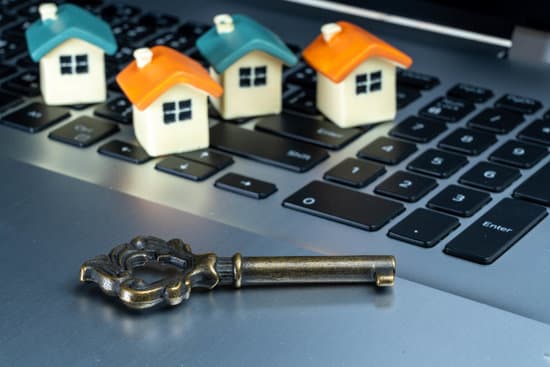Are you considering making home improvements but need additional funds to cover the costs? If so, you may be wondering, “Can you borrow more on a mortgage for home improvements?” This article will explore the concept of borrowing more on a mortgage specifically for home improvement projects and provide valuable insights into this financial option.
Many homeowners find themselves in situations where they require extra funds for renovations, upgrades, or repairs. One way to access these funds is by borrowing against the equity in your home. Understanding how home equity works and how it can be utilized for additional borrowing is essential in exploring your options for financing your home improvement projects.
In this article, we will delve into the different ways to borrow more on a mortgage for home improvements, such as cash-out refinancing and home equity loans. We will also discuss the criteria that need to be met in order to qualify for additional borrowing, as well as the pros and cons of this financial approach.
Additionally, we will provide expert advice and helpful tips for successfully managing and maximizing the use of borrowed funds for your home improvement projects. Whether you are looking to make minor updates or undertake major renovations, this article will guide you through the process of accessing additional funds through your mortgage to achieve your goals.
Understanding Home Equity
When it comes to borrowing more on a mortgage for home improvements, understanding home equity is essential. Home equity refers to the difference between the current market value of a property and the outstanding balance on the mortgage. It represents the portion of the property that you truly own, and it can be a valuable asset when it comes to financing home improvements. Here are some ways in which home equity can be used for additional borrowing:
- Home Equity Line of Credit (HELOC): A HELOC allows homeowners to borrow against the equity in their home, similar to a credit card where you have a credit limit and only pay interest on the amount borrowed.
- Cash-Out Refinancing: This involves replacing your existing mortgage with a new one that has a higher principal balance. The excess funds from this process can then be used for home improvements.
- Home Equity Loan: This is a lump sum loan that is secured by the equity in your home and has a fixed interest rate and repayment terms.
Using home equity for additional borrowing can provide homeowners with access to funds at lower interest rates compared to other types of loans. Additionally, the interest paid on these loans can be tax deductible, making them an attractive option for financing home improvement projects.
Understanding how home equity works can provide homeowners with more financial flexibility when it comes to making improvements to their property However, it’s important to consider the potential risks and responsibilities that come with using this method of borrowing before making any decisions.
Options for Borrowing
When it comes to home improvements, many homeowners find themselves in need of additional funds to cover the costs. Thankfully, there are a few options for borrowing more on a mortgage for home improvements.
One common method is through cash-out refinancing, where you can refinance your existing mortgage for an amount higher than what you currently owe and receive the difference in cash. Another option is a home equity loan, which allows you to borrow against the equity you have built up in your home.
Cash-out refinancing can be an attractive option for homeowners who have built up significant equity in their homes and are looking to take advantage of lower interest rates. However, it’s essential to consider the closing costs and fees associated with this type of loan, as they can add up quickly. On the other hand, home equity loans offer fixed interest rates and predictable monthly payments, making it easier to budget for your home improvement project.
It’s important to weigh the pros and cons of each option before deciding which route to take. With cash-out refinancing, you may be able to secure a lower interest rate and potentially deduct the mortgage interest on your taxes.
Home equity loans offer the benefit of fixed rates and predictable payments, but they do require you to take on additional debt secured by your home. No matter which option you choose, it’s crucial to consider whether or not borrowing more on a mortgage for home improvements is financially feasible for your situation.
| Option | Pros | Cons |
|---|---|---|
| Cash-Out Refinancing | Potentially lower interest rates Lump sum payment | Closing costs and fees Increased risk if property values decline |
| Home Equity Loan | Fixed interest rates Predictable monthly payments | Adds additional debt secured by your homeRisk of Foreclosure if Payments Are MissedClosing costs and fees |
Requirements and Qualifications
When considering borrowing more on a mortgage for home improvements, it is important to understand the requirements and qualifications that need to be met in order to qualify for additional borrowing. Below are some key criteria that borrowers should consider:
1. Credit Score: One of the most important factors when it comes to qualifying for additional borrowing on a mortgage for home improvements is the borrower’s credit score. Lenders typically look for a credit score of 620 or higher in order to approve a loan for home improvements.
2. Loan-to-Value Ratio: Lenders also consider the loan-to-value ratio, which is the amount of the loan compared to the appraised value of the property. In general, lenders prefer a lower loan-to-value ratio, as this indicates less risk for them.
3. Debt-to-Income Ratio: Lenders will also assess the borrower’s debt-to-income ratio, which is the percentage of monthly income that goes toward debt payments. In general, a lower debt-to-income ratio demonstrates to lenders that borrowers are financially responsible and may be more likely to qualify for additional borrowing.
It is important for borrowers to keep these criteria in mind when considering borrowing more on a mortgage for home improvements. Meeting these qualifications will increase one’s chances of being approved for additional funding and help ensure a successful home improvement project.
Pros and Cons
When considering borrowing more on a mortgage for home improvements, it is important to weigh the advantages and disadvantages of this financial decision. By doing so, homeowners can make an informed choice that aligns with their long-term goals and financial situation.
Advantages
One of the main advantages of borrowing more on a mortgage for home improvements is the potential for lower interest rates compared to other types of loans. Mortgage rates are often lower than those for personal loans or credit cards, which can result in significant cost savings over time. Additionally, by using a mortgage to fund home improvements, homeowners may be able to deduct the interest paid on their loan from their taxes, further reducing the overall cost.
Another advantage is the ability to tap into a significant amount of funds. Depending on the equity in the home and the lender’s terms, homeowners can access a substantial sum of money for their renovation projects. This can be particularly beneficial for large-scale renovations or upgrades that require a substantial investment.
Disadvantages
On the flip side, borrowing more on a mortgage for home improvements means taking on additional debt secured by the home. This increase in debt load could potentially impact homeowners’ financial stability in the long run. Additionally, extending the term of the mortgage through additional borrowing could result in paying more interest over time, even with a lower interest rate.
Furthermore, there are costs associated with refinancing or obtaining a home equity loan, such as closing costs and fees. These expenses should be factored into the decision-making process when considering borrowing more on a mortgage for home improvements. It’s essential to compare these costs against potential savings or benefits to determine if this financing option is truly advantageous for individual circumstances.
Ultimately, homeowners should carefully consider both the advantages and disadvantages before deciding whether to borrow more on their mortgage for home improvements. Seeking guidance from financial experts and mortgage professionals can provide valuable insights that aid in making an informed decision about this type of financing.
How to Get Started
Borrowing more on a mortgage for home improvements can be a great way to finance renovations and increase the value of your property. If you’re considering this option, it’s important to understand the steps involved in getting started. Here’s a step-by-step guide on how to begin the process of borrowing more on a mortgage for home improvements.
The first step is to determine how much equity you have in your home. Home equity is the difference between the current market value of your property and the outstanding balance on your mortgage. This equity can be used as collateral for additional borrowing. You can calculate your home equity by getting a professional appraisal of your property and subtracting the amount you still owe on your mortgage.
Once you know how much equity you have, you can explore different options for borrowing more on your mortgage for home improvements. One common option is cash-out refinancing, which involves taking out a new mortgage that is larger than your existing one and using the difference in cash to fund your renovations. Another option is a home equity loan, which allows you to borrow against the equity in your home as collateral.
It’s important to carefully consider the terms and conditions of each borrowing option, as well as the associated fees and interest rates. You should also take into account your financial situation and long-term goals before making a decision. Additionally, make sure to compare offers from multiple lenders to ensure that you get the best deal possible.
| Step | Description |
|---|---|
| 1 | Determine how much equity you have in your home |
| 2 | Explore different options for borrowing more on your mortgage, such as cash-out refinancing or a home equity loan |
| 3 | Carefully consider the terms and conditions of each borrowing option and compare offers from multiple lenders |
Tips for Successful Home Improvement Projects
When it comes to borrowing more on a mortgage for home improvements, it’s essential to use the funds wisely and effectively in order to maximize the benefits of the investment. Whether you’re planning a small remodel or a major renovation, here are some tips for making the most of the borrowed funds:
Set a Realistic Budget
Before diving into any home improvement project, it’s crucial to establish a realistic budget based on your financial situation and the scope of the work. Take into account the cost of materials, labor, permits, and any unexpected expenses that may arise. By setting a budget from the outset, you can ensure that you don’t overspend and that the borrowed funds are used efficiently.
Prioritize Essential Repairs
If you’re facing multiple home improvement projects, prioritize essential repairs over cosmetic upgrades. Addressing structural issues, safety concerns, or items that affect the functionality of your home should take precedence over purely aesthetic enhancements. By focusing on essential repairs first, you can use the borrowed funds to make your home safer and more comfortable for your family.
Work With Reputable Contractors
When using borrowed funds for home improvements, it’s important to hire reputable contractors who have experience in completing similar projects. Research potential contractors, ask for references, and obtain multiple bids before making a decision. Working with reliable professionals can help ensure that the borrowed funds are being invested in high-quality work that will add value to your home.
By following these tips and using the borrowed funds wisely and effectively for home improvements, you can make the most of your investment and create a more comfortable and valuable living space for you and your family. Remember to always carefully consider whether or not borrowing additional money is needed. Always weigh all options like personal savings or personal loans as well while also considering interest rates and loan terms thoroughly.
Expert Advice
In conclusion, borrowing more on a mortgage for home improvements can be a viable option for homeowners looking to enhance their property. With the potential to tap into home equity and access additional funds through options such as cash-out refinancing and home equity loans, individuals can secure the financial resources needed to undertake renovations and upgrades.
However, it is important to carefully consider the requirements and qualifications for these borrowing options, as well as weigh the pros and cons before making a decision.
One of the key advantages of borrowing more on a mortgage for home improvements is the potential for increasing the value of the property. By making strategic investments in renovation projects, homeowners can potentially raise the resale value of their homes, leading to a higher return on investment in the long run. Additionally, accessing funds through home equity can provide an opportunity to complete necessary repairs or upgrades that contribute to overall comfort and functionality in the home.
Financial experts and mortgage professionals can offer valuable insights and advice on navigating the process of borrowing more on a mortgage for home improvements. Their expertise can help individuals understand their options, assess their financial situation, and make informed decisions about how to proceed. With careful planning and consideration, homeowners can use borrowed funds effectively and responsibly to create the home of their dreams.
Frequently Asked Questions
Can I Increase My Mortgage for Home Improvements?
Yes, you can increase your mortgage for home improvements by applying for a home equity loan or a cash-out refinancing. Both options allow you to borrow against the equity in your home to fund renovations.
Can You Add a Home Improvement Loan to Your Mortgage?
Yes, you can add a home improvement loan to your mortgage through a cash-out refinance or a renovation loan. This allows you to combine the balance of your existing mortgage with the amount needed for renovations into one new loan.
Can You Use Leftover Mortgage for Renovations?
Using leftover mortgage funds for renovations is not typically allowed, as mortgage funds are meant for purchasing or refinancing a home. However, you can explore other options such as personal loans or home equity loans to finance renovation projects beyond the original mortgage amount.

I’m thrilled to have you here as a part of the Remodeling Top community. This is where my journey as an architect and remodeling enthusiast intersects with your passion for transforming houses into dream homes.





